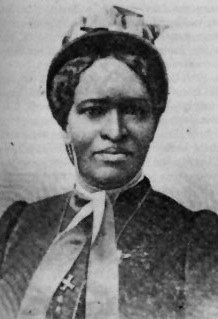 Amanda Berry Smith, a six foot African American woman who dressed like a Quaker, exemplifies how to live in the midst of racism and do so with boundary-breaking grace:
Amanda Berry Smith, a six foot African American woman who dressed like a Quaker, exemplifies how to live in the midst of racism and do so with boundary-breaking grace:
“In Amanda Berry Smith,” Chris Armstrong tells us, “we have someone who could easily have nursed anger and resentment against those who throughout her life put her down — for her race, her class and her gender. Having been treated poorly throughout her life, she could have descended into bitterness… Smith was able to transcend her anger” (Patron Saints for Postmoderns: Ten from the Past Who Speak to Our Future ).
).
Who today is a model of overcoming racism? Of transcending racism? Of healing folks of racism?
How did Amanda overcome racism? Pure and simple: she attributed it to the Wesleyan doctrine of sanctification (see below), and she both advocated the doctrine and was criticized for it — but no one could contest the implications of her belief in sanctification to transcend racism, sexism, and classism.
She was no dreamer of an ideal world; she saw racism, experienced it, knew it, and deflected it. And she arrived on the scene as a major Camp Meeting preacher and pray-er after hardship in marriage and the death of her child.
What is entire sanctification? It is the negative shedding of sin and the positive life of loving God entirely.
Oddly enough: “Locked out of leadership within her own denomination [AME]… frequently snubbed among both blacks and whites for her relative poverty and plain dress, Smith would become the only woman member (that is, leader) of the National Camp Meeting Assocation” (160-161).
I liked this, and perhaps because I read Black Like Me as a high-schooler: “I think some,” she said, “people would understand the quintessence of sanctifying grace if they could be black about twenty-four hours” (162).

